The White-Sides of Lake Saimaa
The passenger ship Savonlinna was constructed as the flagship of the company Saimaan Höyrylaiva Osakeyhtiö in 1904. It became known as the Saimaa Express thanks to its speed, making the trip from Savonlinna to Lappeenranta in less than seven hours.
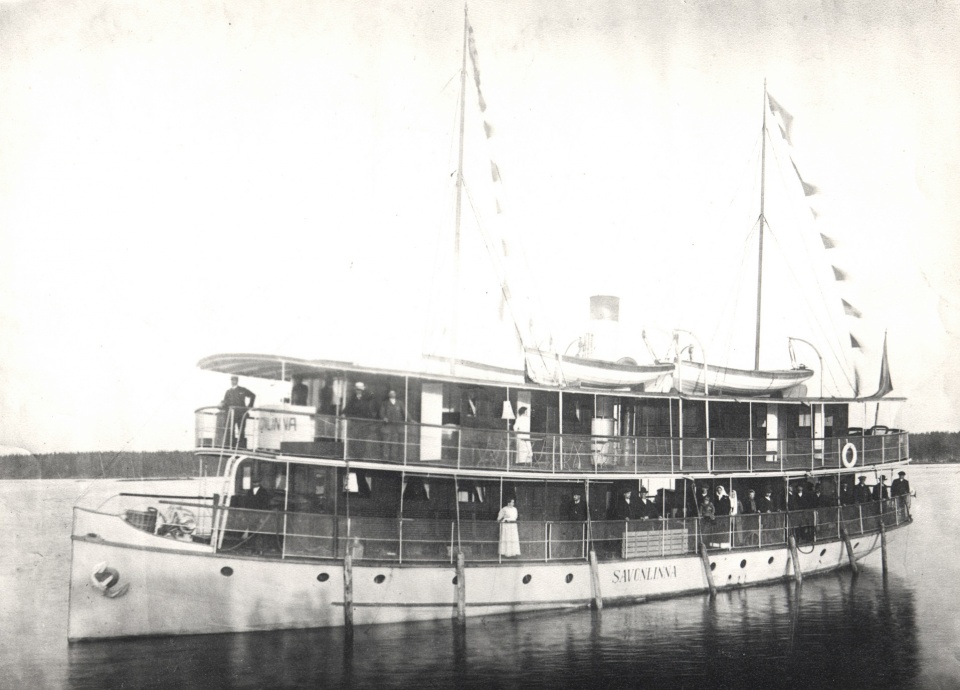
The foundation for Saimaan Höyrylaiva Osakeyhtiö (”The Saimaa Steam Ship Corporation”) was laid at a meeting in Savonlinna on August 11, 1903. Townsfolk with an interest in maritime matters decided to found a company to run a ship daily between Savonlinna and Lappeenranta.
By the time of the share subscription meeting on September 11 they’d already decided to commission a ship from the Paul Wahl Co works in Varkaus at the price of 62,000 Finnish marks. The ship was christened as the Savonlinna, after her hometown, where she first arrived in May 20, 1904.
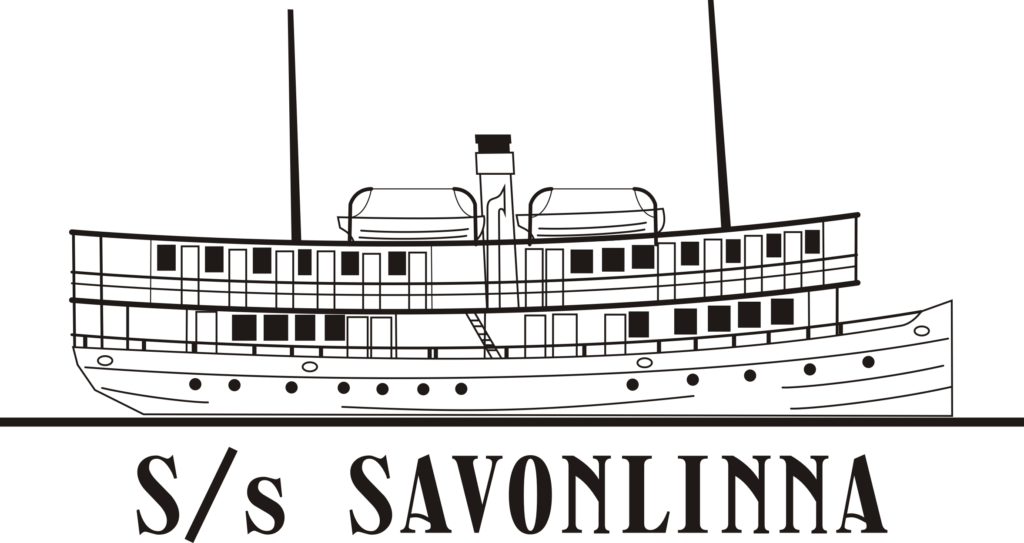
- Built at the Paul Wahl & Co shipyards in Varkaus in 1904.
- Length 27.8 m.
- Width 6.6 m.
- Draft 2.4 m.
- Speed 11.5 knots.
- Still powered by a wood-fired steam engine to this day.
- Also used for public cruises.
Passenger shipping flourished on the Saimaa in the years of 1905–1916 as Russian high society flocked to the spa in Savonlinna. 1913 was a particularly exceptional year. The corporation’s annual report notes that the previous summer’s music festivals and opera shows had brought in considerable profits. In 1916, the First World War diverted travellers away from Russia and into Finland. At the same time, economic growth among the working class lead to more local traffic.
The Saimaa Express Makes Waves
The surviving records of the Paul Wahl & Co shipyards in Varkaus contain the original commission for the construction of the Savonlinna, with exacting specifications for the ship’s structure and machinery. The ship’s principal measurements were to be 27.66 x 6.69 metres and the steam engine was to run at 225 nominal horsepower. Originally the ship had room for 174 passengers, a number that would later rise to over 200. The maximum speed attained during her trial run was 11.5 knots, or 21.3 kilometres per hour. At that speed, the ship would go from Savonlinna to Lappeenranta in 6 hours and 45 minutes.
The Savonlinna was built with one-and-a-half stories of cabins on deck, consisting of first-, second- and third-class rooms. Its furnishings were more impressive than usual. The walls were covered with white plywood or fancy pegamoid upholstery. Wall mouldings were made of birch, pine, mahogany or oak, depending on the class. The sofa beds had bedsprings and red or blue velvet upholstery. Third class rooms had plywood or slat benches that were made into beds for the night.
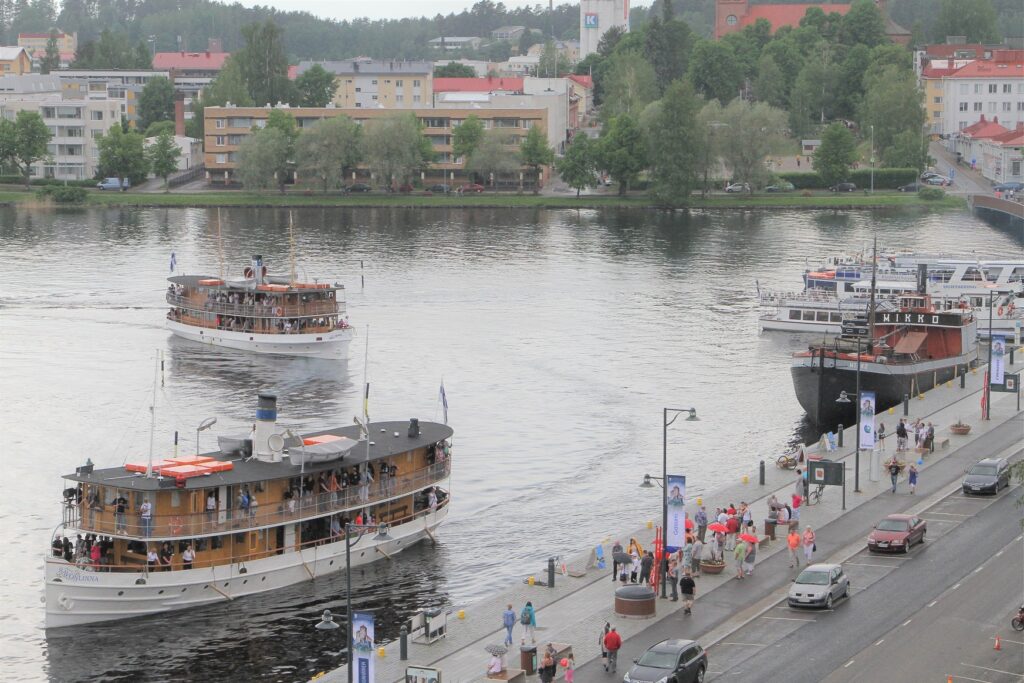
Cabins came equipped with a washstand, storage nets, coat hooks, roller blinds, electric lights along with balanced candles, and some first-class cabins even had a telephone to contact the kitchen. Public rooms also had highly important spittoons. The decks were outfitted with basket chairs and whitewashed iron tables and chairs to match the ship’s distinctive white sides. To keep passengers occupied, the ship had subscriptions to numerous newspapers.
In addition to the captain, the ship’s crew included the first mate, the machinist, the machinist’s mate, two stokers, two steersmen, two deckhands, the quartermistress, the cook, one or two waiters and a cleaner. This complement would change later on, as the ship started running on oil; stokers were no longer necessary and one of them was replaced with an engineer.
The construction of the Savonlinna brought the town much closer to Lappeenranta and the railway to St. Petersburg. The fact that the ship could make the run from Lappeenranta in under seven hours meant she could make the round trip in a single day. The time of departure from Lappeenranta was set at 5 AM to coincide with the arrival of the train, and to allow the return trip from Savonlinna to catch the evening train at 11 PM. Due to its speed and association with the railway, the ship soon gained the nickname ”the Saimaa Express”. In addition to passengers and cargo, she also carried mail.
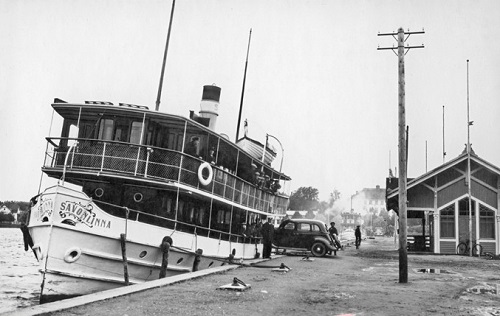
Starting from the 1920s, the SS Savonlinna’s route was expanded to include Lappeenranta’s neighbouring port of Vuoksenniska, and the SS Imatra II started taking shifts on the route.While passenger traffic was booming, a good deal of freight was shipped as well, especially between Puumala, Lappeenranta and Vuoksenniska. The people of the countryside and the islands took to the ships as a conveyance to the town markets, bringing aboard regular farm products as well as cattle. The ambience must have been something when the ship was crammed full of passengers: first-class vacationers and businessmen on the upper decks, the lower decks teeming with commoners and their belongings.
There could be more than ten head of cattle and horses on the afterdeck. Due to the slippery nature of the deck, the horses had bags tied over their feet and were kept satisfied with feedbags full of hay. For lower deck cargo, the ships had large insulated coolers to keep butter, cheese, fish and meat fresh for the market. Whichever ship was working the route on a Sunday would also ferry churchgoers from Vuoksenniska to Ruokolahti.
Buffeted by the Winds of Change
In April of 1927, a fire broke out on the Savonlinna, causing severe damage. Every wooden part was destroyed, with only the engine and the hull surviving. Luckily, the ship had been comprehensively insured and was soon rebuilt.
The shipboard facilities would later be expanded and made more comfortable. By 1928 the ship had a radio and passengers could make calls with the ship’s phone while at port. The wood-fired engine was altered to run on oil in the 1960s and switched back to firewood in the 1980s.
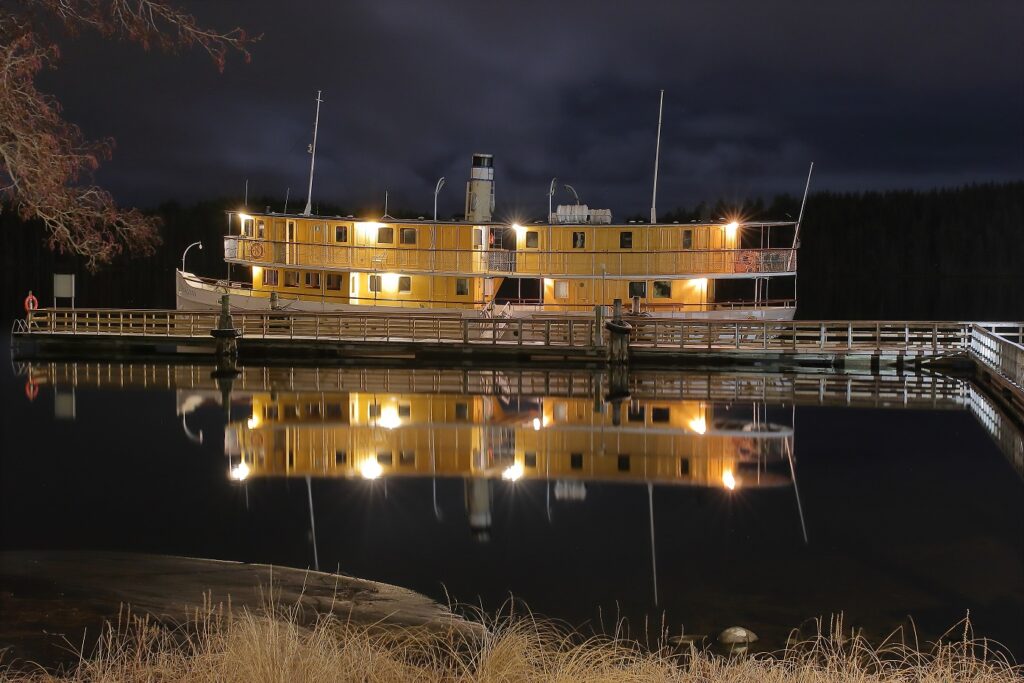
Following the spa boom of the early 20th century, passenger traffic kept growing slightly until 1939. Tbe post-war closing of the Saimaa Canal to the Gulf of Finland, combined with the development of overland traffic, gradually made passenger shipping less and less profitable. The last company left in charge of the Saimaa’s flotilla of white-sides was Saimaan Laivamatkat Ltd, a joint effort by local municipalities, which also went out of business in 1982 and had its assets auctioned off.
The city of Savonlinna bought its namesake vessel and renovated her as a museum ship, with all public-facing spaces restored to their post-1927 appearance. The SS Savonlinna is currently part of the steamer fleet of the Museum of Savonlinna, and is still available for cruises.